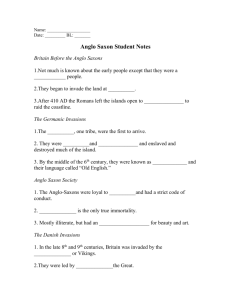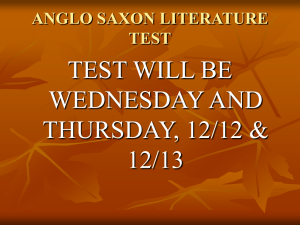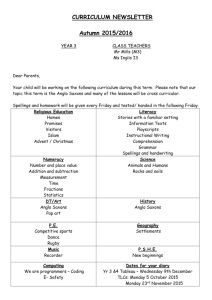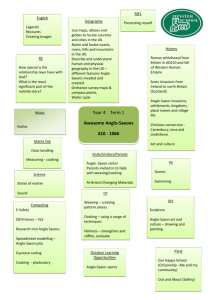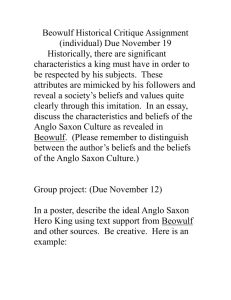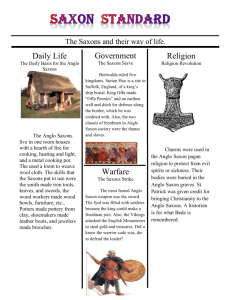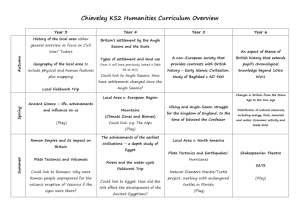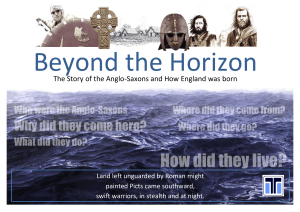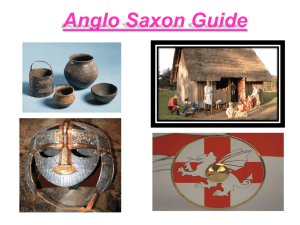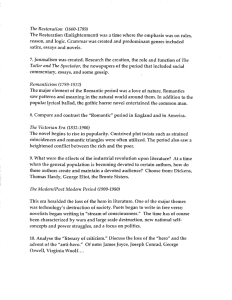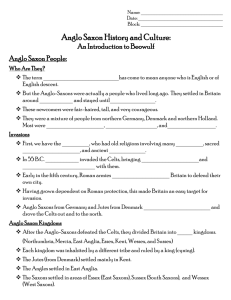The Anglo Saxon Period – 449
advertisement
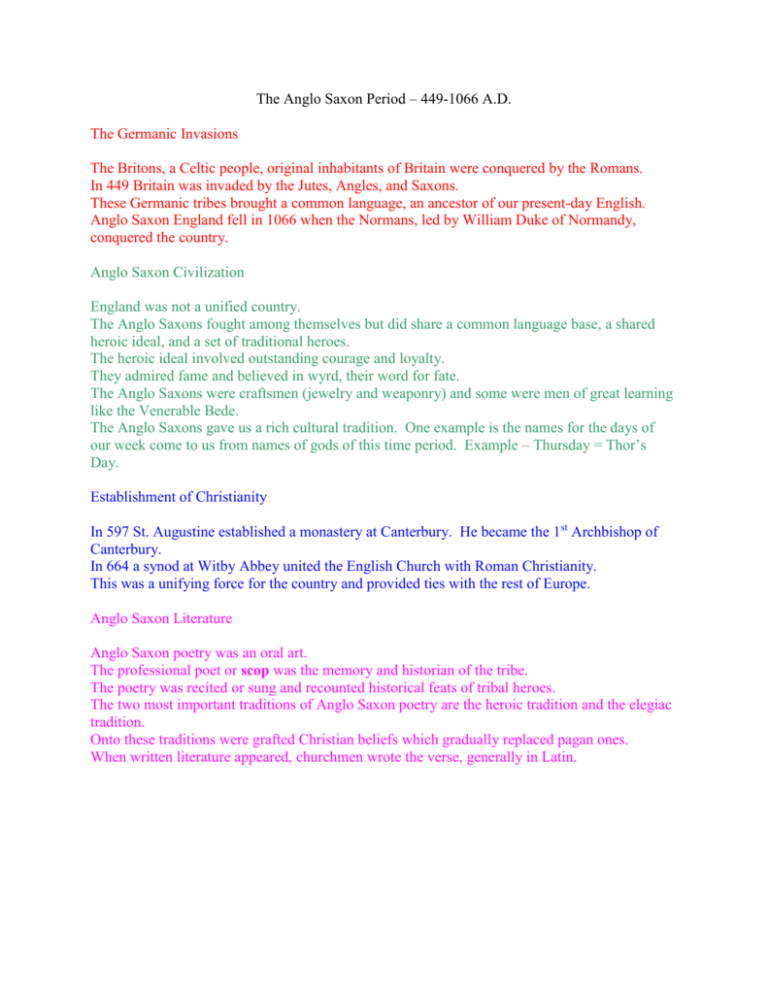
The Anglo Saxon Period – 449-1066 A.D. The Germanic Invasions The Britons, a Celtic people, original inhabitants of Britain were conquered by the Romans. In 449 Britain was invaded by the Jutes, Angles, and Saxons. These Germanic tribes brought a common language, an ancestor of our present-day English. Anglo Saxon England fell in 1066 when the Normans, led by William Duke of Normandy, conquered the country. Anglo Saxon Civilization England was not a unified country. The Anglo Saxons fought among themselves but did share a common language base, a shared heroic ideal, and a set of traditional heroes. The heroic ideal involved outstanding courage and loyalty. They admired fame and believed in wyrd, their word for fate. The Anglo Saxons were craftsmen (jewelry and weaponry) and some were men of great learning like the Venerable Bede. The Anglo Saxons gave us a rich cultural tradition. One example is the names for the days of our week come to us from names of gods of this time period. Example – Thursday = Thor’s Day. Establishment of Christianity In 597 St. Augustine established a monastery at Canterbury. He became the 1st Archbishop of Canterbury. In 664 a synod at Witby Abbey united the English Church with Roman Christianity. This was a unifying force for the country and provided ties with the rest of Europe. Anglo Saxon Literature Anglo Saxon poetry was an oral art. The professional poet or scop was the memory and historian of the tribe. The poetry was recited or sung and recounted historical feats of tribal heroes. The two most important traditions of Anglo Saxon poetry are the heroic tradition and the elegiac tradition. Onto these traditions were grafted Christian beliefs which gradually replaced pagan ones. When written literature appeared, churchmen wrote the verse, generally in Latin.
